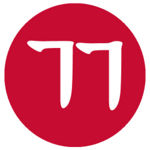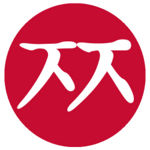Difference between revisions of "Hangeul step 6"
DigitalSoju (Talk | contribs) |
DigitalSoju (Talk | contribs) |
||
| Line 9: | Line 9: | ||
==Double consonants== | ==Double consonants== | ||
[[File:Similar letters consonants2.png|right|]] | [[File:Similar letters consonants2.png|right|]] | ||
| − | We saw how the letters ㅋ,ㅌ,ㅊ,ㅍ were similar to the letters ㄱ,ㄷ,ㅈ,ㅂ in step 4. Now we will learn another another set of letters that are also similar, ㄲ, ㄸ, ㅉ, ㅃ and ㅆ. If you noticed, they are just a double version of ㄱ, ㄷ, ㅈ, ㅂ, ㅅ. These sounds are not only the hardest to explain, but the hardest to pronounce for non native speakers since there is nothing remotely similar in English or other languages. These letters will take a lot of practice to pronounce, so listen carefully to the audio and make sure you can distinguish it from other sounds. | + | We saw how the letters ㅋ,ㅌ,ㅊ,ㅍ were similar to the letters ㄱ,ㄷ,ㅈ,ㅂ in step 4. Now we will learn another another set of letters that are also similar, ㄲ, ㄸ, ㅉ, ㅃ and ㅆ. If you noticed, they are just a double version of ㄱ, ㄷ, ㅈ, ㅂ, ㅅ. These sounds are not only the hardest to explain, but the hardest to pronounce for non native speakers since there is nothing remotely similar in English or other languages. These letters will take a lot of practice to pronounce, so listen carefully to the audio and make sure you can distinguish it from other sounds. The best way I can generalize these sounds are they are stronger and more tensed versions of some of the previous sounds you've learned. Note '''these consonants are not aspirated'''. |
{{-}} | {{-}} | ||
| Line 20: | Line 20: | ||
|Consonant = ㄲ | |Consonant = ㄲ | ||
|Cons image = ㄲ.jpg | |Cons image = ㄲ.jpg | ||
| − | |Cons text = For full information about this letter, see [[ㄲ]]. | + | |Cons text = This is a more stronger and tensed version of ㄱ. To make this sound, place everything in your mouth as if you were going to make a ㄱ sound, then hold that position for a slight second and 'push off' harder than normal making the sound stronger. and For full information about this letter, see [[ㄲ]]. |
|Vowel = ㅘ | |Vowel = ㅘ | ||
|Vowel image = ㅘ.jpg | |Vowel image = ㅘ.jpg | ||
| Line 65: | Line 65: | ||
|Consonant = ㄸ | |Consonant = ㄸ | ||
|Cons image = ㄸ.jpg | |Cons image = ㄸ.jpg | ||
| − | |Cons text = For full information about this letter, see [[ㄸ]]. | + | |Cons text = This is a more stronger and tensed version of ㄷ. To make this sound, place everything in your mouth as if you were going to make a ㄷ sound, hold your tongue in that position for a slight second and 'push off' with more force than normal making the sound stronger. For full information about this letter, see [[ㄸ]]. |
|Cons audio description1 = Male | |Cons audio description1 = Male | ||
|Vowel = ㅙ | |Vowel = ㅙ | ||
| Line 106: | Line 106: | ||
|Consonant = ㅆ | |Consonant = ㅆ | ||
|Cons image = ㅆ.jpg | |Cons image = ㅆ.jpg | ||
| − | |Cons text = This is a stronger version of ㅅ. Just make your hiss stronger than the normal /s/. For full information about this letter, see [[ㅆ]]. | + | |Cons text = This is a stronger version of ㅅ. Just make your hiss stronger than the normal /s/. When ㅆ is combined with the vowels ㅣ and the double vowels ㅑ, ㅕ, ㅛ, or ㅠ it sounds like a sligthtly stronger version of the "sh" sound. For full information about this letter, see [[ㅆ]]. |
|Cons audio description1 = Male | |Cons audio description1 = Male | ||
|Vowel = ㅚ | |Vowel = ㅚ | ||
| Line 147: | Line 147: | ||
|Consonant = ㅃ | |Consonant = ㅃ | ||
|Cons image = ㅃ.jpg | |Cons image = ㅃ.jpg | ||
| − | |Cons text = For full information about this letter, see [[ㅃ]]. | + | |Cons text = This is a more stronger and tensed version of ㅂ. To make this sound, put your lips together as if you were going to make a ㅂ sound, then hold your lips a slight second and 'push off' harder than normal making the sound stronger. For full information about this letter, see [[ㅃ]]. |
|Vowel = ㅝ | |Vowel = ㅝ | ||
|Vowel image = ㅝ.jpg | |Vowel image = ㅝ.jpg | ||
| Line 187: | Line 187: | ||
|Consonant = ㅉ | |Consonant = ㅉ | ||
|Cons image = ㅉ.jpg | |Cons image = ㅉ.jpg | ||
| − | |Cons text = For full information about this letter, see [[ㅉ]]. | + | |Cons text = This is a more stronger and tensed version of ㅈ. To make this sound, place everything in your mouth as if you were going to make a ㅈ sound, hold that position for a slight second and 'push off' with more force than normal making the sound stronger. For full information about this letter, see [[ㅉ]]. |
|Vowel = ㅞ | |Vowel = ㅞ | ||
|Vowel image = ㅞ.jpg | |Vowel image = ㅞ.jpg | ||
Revision as of 11:40, 20 February 2010
|
|
|
| Help · Cheat Sheet · Community portal |

|
This section is still under construction! Descriptions and audio are still being made.
Contents
Double consonants
We saw how the letters ㅋ,ㅌ,ㅊ,ㅍ were similar to the letters ㄱ,ㄷ,ㅈ,ㅂ in step 4. Now we will learn another another set of letters that are also similar, ㄲ, ㄸ, ㅉ, ㅃ and ㅆ. If you noticed, they are just a double version of ㄱ, ㄷ, ㅈ, ㅂ, ㅅ. These sounds are not only the hardest to explain, but the hardest to pronounce for non native speakers since there is nothing remotely similar in English or other languages. These letters will take a lot of practice to pronounce, so listen carefully to the audio and make sure you can distinguish it from other sounds. The best way I can generalize these sounds are they are stronger and more tensed versions of some of the previous sounds you've learned. Note these consonants are not aspirated.
Diphthongs (double vowels)
Diphthongs are defined as: "a complex vowel sound in which the first vowel gradually moves toward a second vowel so that both vowels form one syllable, e.g. "a" and "i" in "rail".1" The vowels we are learning are a combination of vowels we already learned. For example ㅘ is a combination of ㅗ and ㅏ. A lot of these are pronounced by saying the first vowel and the second vowel quickly, however you will notice that all of these sounds (except ㅢ) make a /w/ sound in front.
- Source: MSN Encarta dictionary
|
| ||||||||||
|
ㅘ is a combination of the vertical vowel ㅗ and the horizontal vowel ㅏ. This sounds you are pronouncing ㅗ and ㅏ together, but with a /w/ sound in front. Sounds similar to the 'wa' in 'want.' For full information about this letter, see ㅘ.
|
This is a more stronger and tensed version of ㄱ. To make this sound, place everything in your mouth as if you were going to make a ㄱ sound, then hold that position for a slight second and 'push off' harder than normal making the sound stronger. and For full information about this letter, see ㄲ. | ||||||||||
| Practice | |
|---|---|
| 가 | |
| 카 | |
| 까 | |
| 꺼 | |
| 끄 | |
| 과 | |
| 화 | |
| 봐 | |
|
| ||||||||||
|
ㅙ is a combination of the vertical vowel ㅗ and the horizontal vowel ㅐ. This sounds you are pronouncing ㅗ and ㅐ together, but with a /w/ sound in front. Sounds similar to the 'wea' in "weapon." However try more to make it sound like you are putting together ㅗ and ㅐ together with a /w/ sound. For full information about this letter, see ㅙ.
|
This is a more stronger and tensed version of ㄷ. To make this sound, place everything in your mouth as if you were going to make a ㄷ sound, hold your tongue in that position for a slight second and 'push off' with more force than normal making the sound stronger. For full information about this letter, see ㄸ. | ||||||||||
| Practice | |
|---|---|
| 다 | |
| 타 | |
| 따 | |
| 또 | |
| 괘 | |
| 돼 | |
|
| ||||||||||
|
ㅚ is a combination of the vertical vowel ㅗ and the horizontal vowel ㅣ. This sounds about the same as the last vowel you learned, ㅙ. For full information about this letter, see ㅚ.
|
This is a stronger version of ㅅ. Just make your hiss stronger than the normal /s/. When ㅆ is combined with the vowels ㅣ and the double vowels ㅑ, ㅕ, ㅛ, or ㅠ it sounds like a sligthtly stronger version of the "sh" sound. For full information about this letter, see ㅆ. | ||||||||||
| Practice | |
|---|---|
| 사 | |
| 싸 | |
| 서 | |
| 써 | |
| 퇴 | |
| 되 | |
| 쇠 | Error: file |
|
| ||||||||||
|
ㅝ is a combination of the vertical vowel ㅜ and the horizontal vowel ㅓ. Sounds similar to 'wo' in wonderful. Again, try to focus on saying ㅜ and ㅓ together quickly. For full information about this letter, see ㅝ.
|
This is a more stronger and tensed version of ㅂ. To make this sound, put your lips together as if you were going to make a ㅂ sound, then hold your lips a slight second and 'push off' harder than normal making the sound stronger. For full information about this letter, see ㅃ. | ||||||||||
| Practice | |
|---|---|
| 보 | |
| 포 | |
| 뽀 | |
| 삐 | |
| 궈 | Error: file |
| 둬 | Error: file |
| 뭐 | Error: file |
|
| ||||||||||
|
ㅜ is a combination of the vertical vowel ㅜ and the horizontal vowel ㅔ. This vowel does not appear very much. It is also basically pronounced the same as ㅙ and ㅚ. For full information about this letter, see ㅞ.
|
This is a more stronger and tensed version of ㅈ. To make this sound, place everything in your mouth as if you were going to make a ㅈ sound, hold that position for a slight second and 'push off' with more force than normal making the sound stronger. For full information about this letter, see ㅉ. | ||||||||||
| Practice | |
|---|---|
| 자 | |
| 차 | |
| 짜 | |
| 쪄 | |
| 쉐 | |
| ||||
|
ㅟ is a combination of the vertical vowel ㅜ and the horizontal vowel ㅣ. For full information about this letter, see ㅟ.
| ||||
| Practice | |
|---|---|
| 귀 | |
| 뒤 | |
| 튀 | |
| ||||
|
Our final vowel is ㅢ. It is a combination of the vertical vowel ㅡ and the horizontal vowel l. To pronounce it, just say ㅡ and ㅣ very quickly. Unlike the other vowels we've learned in this section, this does not make a /w/ sound. For full information about this letter, see ㅢ.
| ||||
More Examples
| Word | Male voice | Female voice |
|---|---|---|
| 가깝다 (to be close) | ||
| 가위 (scissors) | ||
| 과일 (fruit) | ||
| 과자 (snack) | ||
| 기쁘다 (to be glad) | ||
| 깍두기 (cubed radish kimchi) | ||
| 꽃 (flower) | ||
| 뜨겁다 (to be hot [touch]) | ||
| 법원 (court of law) | ||
| 비싸다 (to be expensive) | ||
| 빠르다 (to be quick) | ||
| 스웨덴 (Sweden) | (need audio) | (need audio) |
| 싸구려 (cheap goods) | ||
| 싸다 (to be cheap) | ||
| 싸우다 (to fight) | ||
| 쓰다 (to use, to write) | ||
| 어렵다 (to be difficult) | ||
| 예쁘다 (to be pretty) | ||
| 왕 (king) | ||
| 왜 (why) | ||
| 외국 (foreign country) | ||
| 외숙모 (mom's brother's wife) | ||
| 원 (The won, Korean currency) | ||
| 웬일 (what reason) | ||
| 위험하다 (to be dangerous) | ||
| 의료 보험 (medical insurance) | ||
| 의사 (doctor) | ||
| 의자 (chair) | ||
| 치과 (denist office) | ||
| 취하다 (to get drunk) | ||
| 회사 (company) | ||
| 원숭이 (monkey) | ||
| 먹었어요 (ate) | ||
| 했어요 (did) | Error: file |
Error: file |
Writing
Writing the double consonants requires just writing the consonants we previously learned twice, so to write ㄲ you just write ㄱ twice. For the vowels in this section, you write the vertical vowel (ㅗ, ㅜ, ㅡ) before the horizontal vowel. So if you write ㅘ, you write ㅗ first, then ㅏ. A section 7 will be made in the future for more advanced pronunciation (notice we avoided ㅎ batchim examples? that was for a reason).

|












